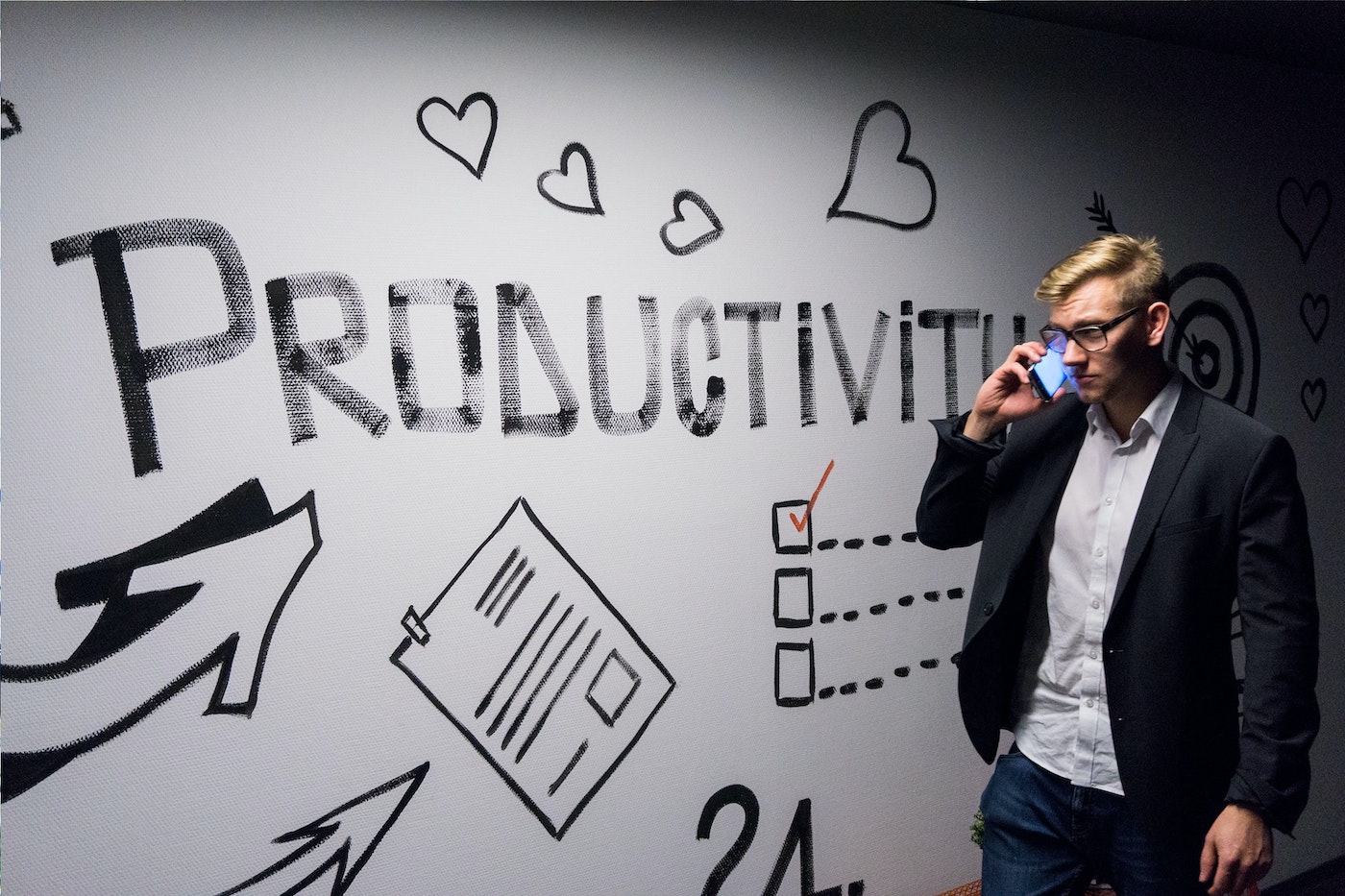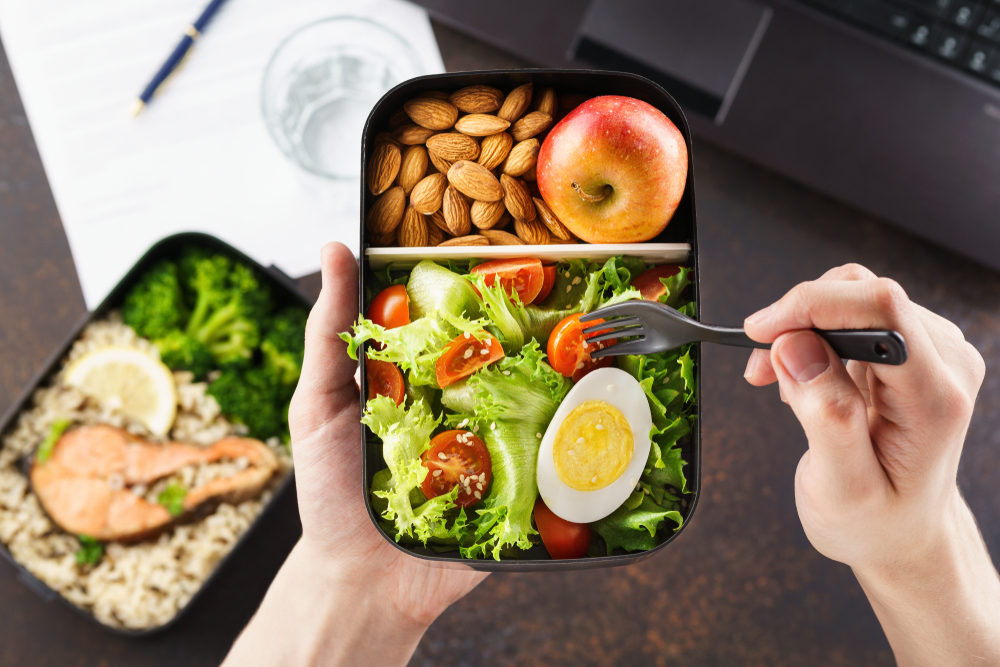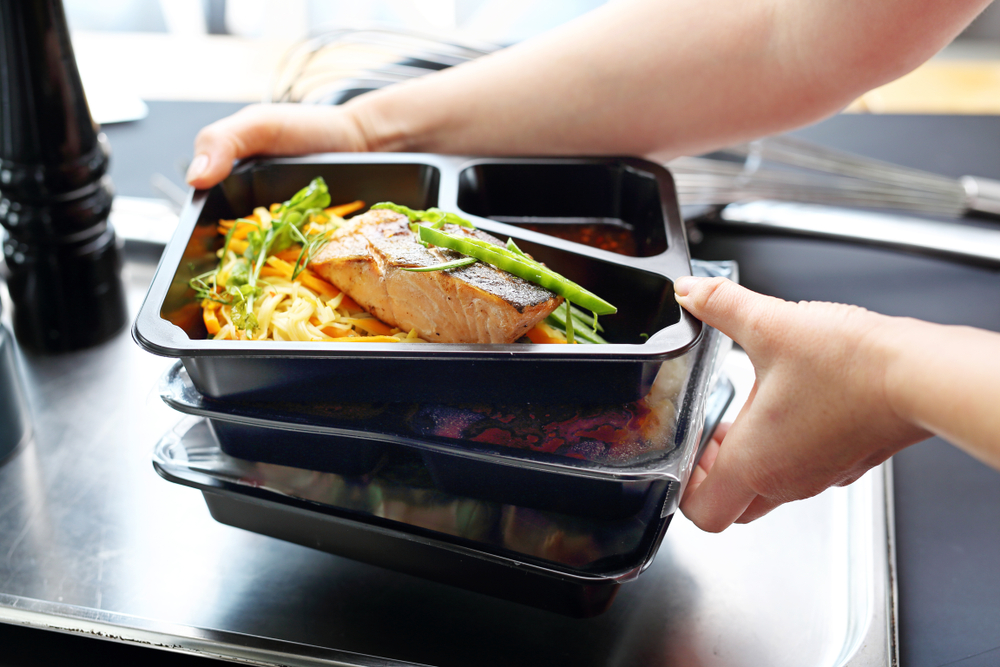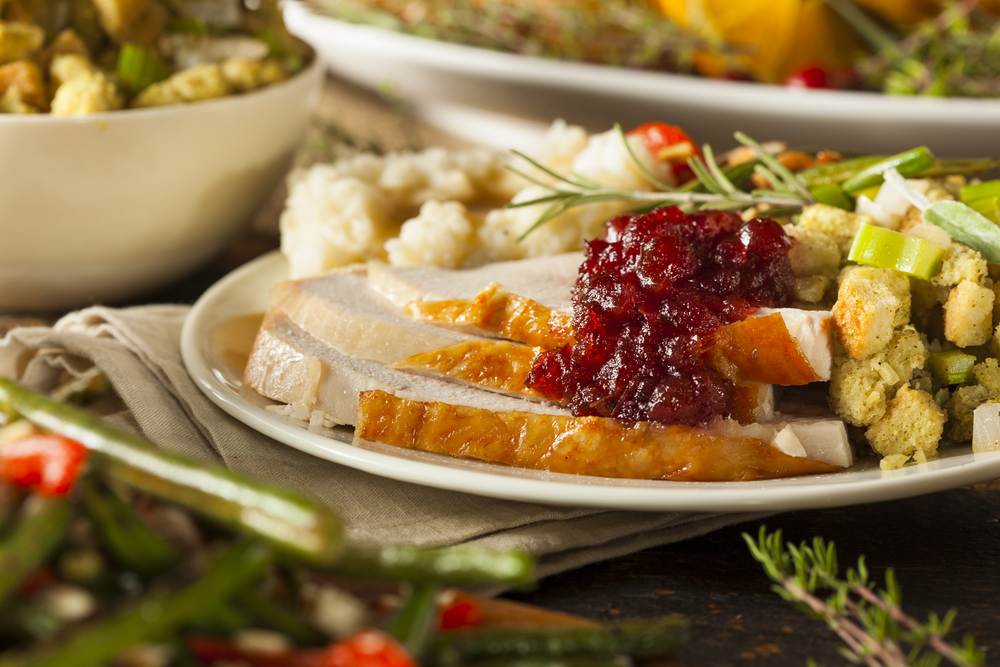SUMMARY
Your energy and productivity are impacted by what you eat and when you eat it. Energy-boosting foods such as eggs, avocado and smoked salmon can provide you with the fuel you need to power through the day.
We’re all familiar with the dreaded afternoon slump—your energy fades, your brain slows down, and what seemed like an easy task hours ago now feels like climbing Mount Everest.
Try as you might, you can’t seem to get the motivation or stamina to get the work done.
When we’re feeling sluggish, we often reach for something that will keep us going. Though they can give us an initial boost, certain foods ultimately drop us into an energy crash. This cycle leads to more fatigue, poor concentration and irritability.
The good news is there’s a science to the slump. You can beat it if you know what to eat. Let’s take a closer look at how energy-boosting foods can help you maximize your productivity throughout the day.
Cheat sheet
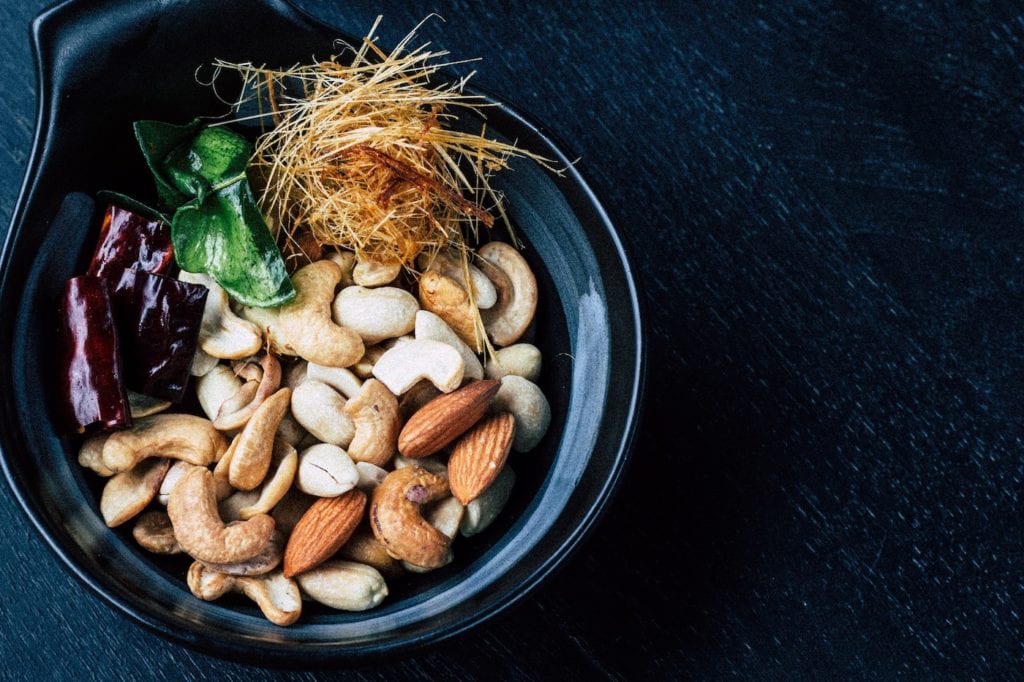
If you need a quick cheat sheet, here it is!
- Best energy-boosting foods: Seeds, nuts, fatty fish, fruits, veggies and coffee when plain. Also, tea, water, whole grains, lean proteins, soy protein like tofu and edamame, beans and legumes.
- Foods that sap energy: Sugary foods, pastries and sweetened drinks like soda and fruit juice. Also, salty chips, processed and packaged foods, and items made with white bread and flour; this includes pizza dough and white pasta.
- What about coffee?: The best times to have coffee are late morning and mid-afternoon. That’s between 10 am to 12 pm and between 2 pm and 4 pm. If caffeine keeps you up at night, avoid having coffee any later than noon.
- What to eat and when: Your heaviest meal should be breakfast! You have the most time to burn it off, and it provides fuel you can use throughout the day. Lunch should also be bigger than dinner. Dinner should be your smallest meal. You don’t need that much energy at night. Also, you don’t want to ingest a meal that will leave you feeling too heavy before bedtime.
Keep these tips in mind, and you should have tons of energy all day long!
How food affects your energy

We’ve all been warned against processed foods like sweets, carbs, soda and white bread. Certain foods give us a quick hit of energy followed by a prolonged slump.
These types of foods do damage to our energy levels because they all score high on the glycemic index. This means they’re digested and absorbed quickly. This pushes glucose into our cells and causes our blood sugar levels to spike. In our bodies, we experience this as the common spiking and crashing cycle. This cycle gets triggered when we reach for ice cream, candy, rice, pasta or an energy drink.
Low-glycemic foods sit at the other end of the spectrum. These foods have a low score on the glycemic index. This means they’re digested and absorbed more slowly, giving the body a steady and sustained supply of energy. The list of low-glycemic foods includes leafy greens, low-sugar fruit, nuts, seeds, avocado, fish, meat, dairy and legumes.
Your energy levels are also impacted by other lifestyle choices. Factors such as how active your lifestyle is and how much sleep you’re getting play a role. However, the foods you eat and when you eat them have a huge impact on how energetic you feel during the day.
When you eat matters
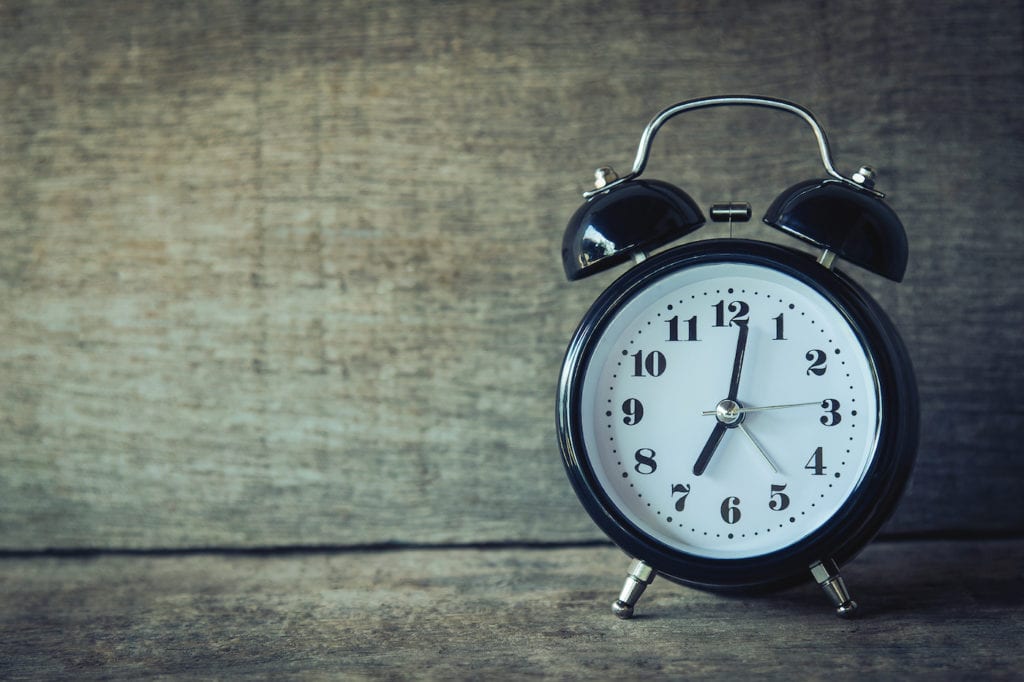
If you want to keep your energy high, these are the best times of day to consume a meal:
- Morning
- Early afternoon
- Late afternoon or early evening
If you consume energy-boosting foods in the morning, you’ll have the fuel you need to start the day off right. The early afternoon is around lunch time; at this point, you need a meal to help you make it through the second half of the workday. A late-afternoon snack can provide added energy for completing your workday or hitting a workout class before heading home.
The portions may differ at each of these meals. Your breakfast or lunch will be larger than your afternoon snack. However, each meal will consist of the same basic types of food.
So, how do you put it all together?
Here are some energy-boosting foods to add to your pantry. We’ve also included information on when to consume these meals to best support your mental state and energy levels.
Energy-boosting foods to eat for breakfast
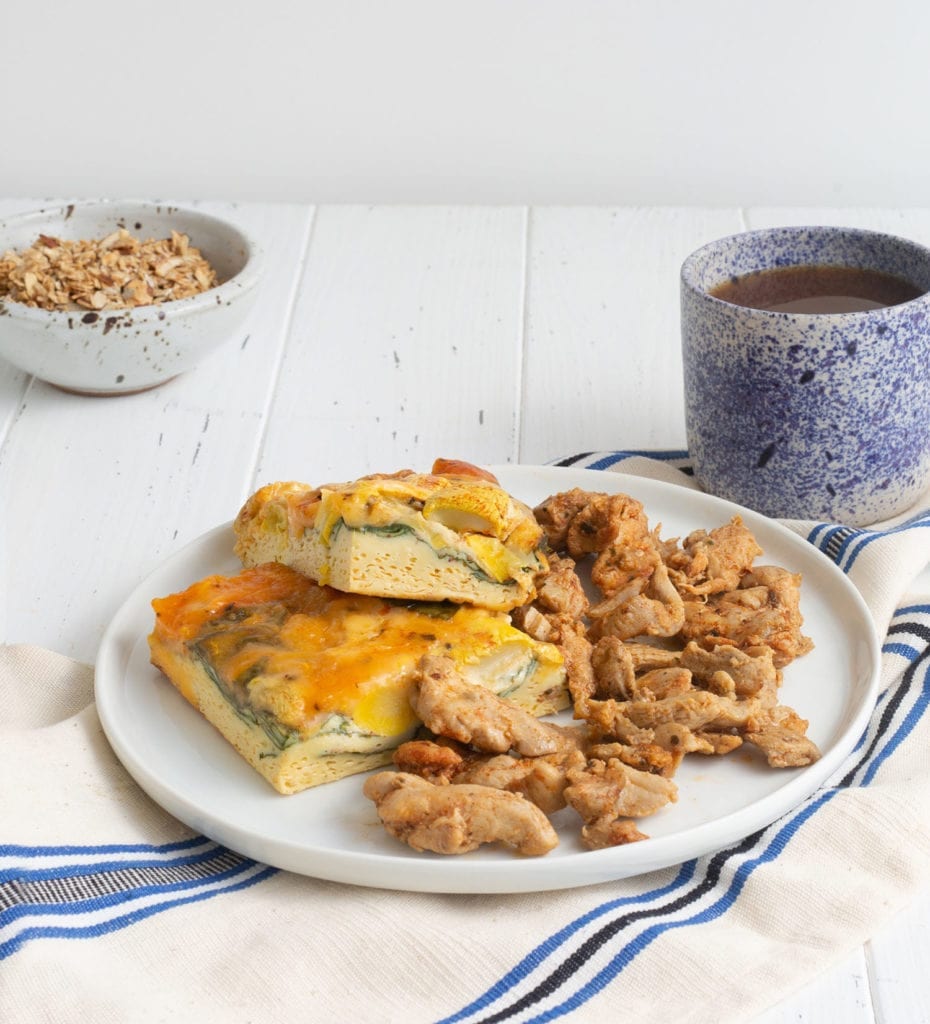
Upon waking, up we recommend choosing high-protein foods, along with healthy fats and fiber. These nutrients have been proven to enhance productivity. Studies have found that high-protein foods raise the tyrosine levels. Tyrosine is an amino acid that aids in the production of norephedrine and dopamine. These two brain chemical messengers keep you energized and alert.
Proteins, fats and fiber also boost satiety, so you’ll stay fuller longer. This will prevent the lack of focus caused by sugar cravings. These cravings are often the result of eating high-glycemic breakfasts that include foods such as cereal and bagels.
Aim for around 20 grams of protein or more, and at least 6 grams of fiber for breakfast. Think in terms of hitting all the marks. Have one item that represents each of the macronutrients. That means one for great protein, one for some healthy fats, and one for good fiber and complex carbs. The best is when a single food includes all three macronutrients. Nuts are a good example of this.
Here’s what to eat
- Eggs: Eggs have choline, which fuels the brain and boosts cognitive thinking. Keep the yolk, as that is where choline is. And the egg whites have a ton of protein, which will fill you up and enhance your performance. Try making hard-boiled eggs or an omelet. You can also make portable egg muffin cups for an on-the-go breakfast.
- Avocado: Similar to eggs, avocados improve cognitive function and boosts satiety. One study found that subjects who ate one avocado a day for six months significantly improved problem-solving skills and memory. And it’s versatile. You can spread it on whole grain for avocado toast or use it with eggs or in a breakfast salad. You can add it to a morning smoothie, or mix it with smoked salmon. It’s rich in protein and supports healthy blood circulation to the heart and brain.
- Smoked salmon: The omega-3 fatty acids in salmon boost brain health and improve memory. They can also help you fight off neurological and metabolic diseases. Among animal products, salmon is one of the healthiest protein sources. Spread this fish on toast, or add it to eggs. You can even make a dip and take some crackers with you for on-the-go breakfast.
- Oatmeal with blueberries and nut butter: Here’s a great one! Oatmeal has complex carbs and fiber to give immediate and sustainable energy. Blueberries are beneficial for the brain and can help improve awareness and perception. Finally, nut butter is packed with magnesium, a nutrient that aids in energy production. Nut butter is also low on the glycemic index, so it’ll keep your blood sugars on an even keel.
If you need additional options, you can’t go wrong with greens (try a green smoothie), coffee (with an optional splash of milk or stevia) or Greek yogurt. Other great energy-boosting foods to eat at your breakfast meal include low-sugar fruits like melon and berries, turkey sausage patties or other lean meat sources.
What to avoid for breakfast
- Ditch the sugary pastry and the sweetened coffee drink. Skip cereal, since it’s low in fiber and protein. Avoid processed fruit juices, since they’re loaded with sugar. These foods will only give you that crash later and drain you of energy.
Energy-boosting foods to eat for lunch
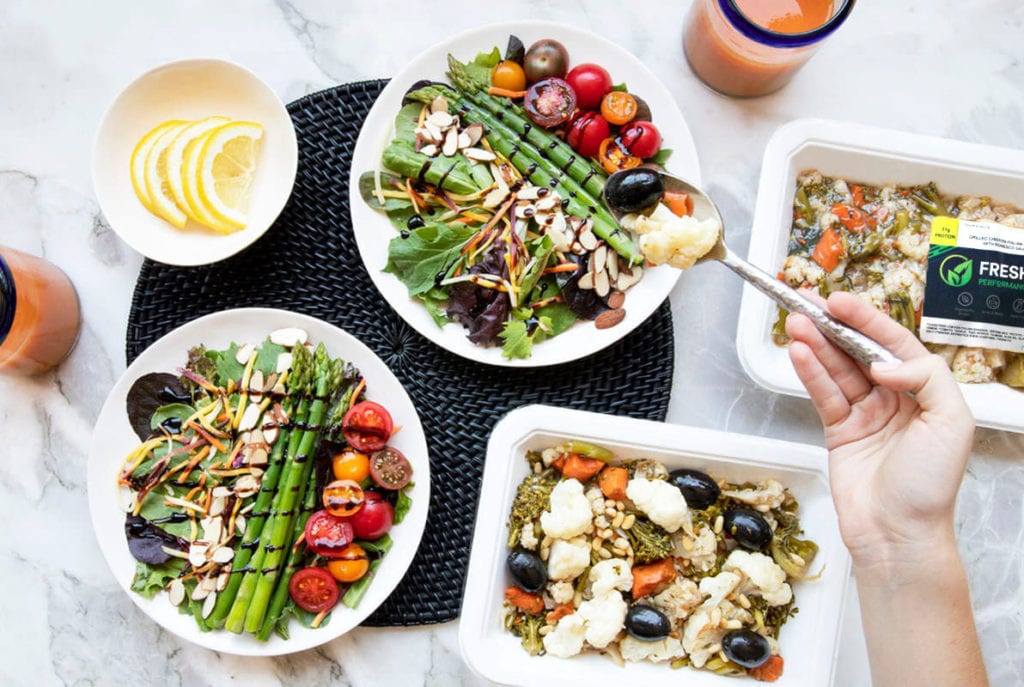
Lunch should be your second biggest meal after breakfast. For lunch time, we’ll shift away from oats and eggs and move towards leafy greens and lean proteins. These types of food are packed with iron. Iron helps transport oxygen through the blood, thus helping to boost energy and fight fatigue.
Here’s what to eat
- Leafy green salad: You cannot go wrong with greens, which have iron, fiber, and B vitamins. B vitamins are essential in converting food into energy, and one of the most common symptoms of iron deficiency is fatigue. If you want to maximize your energy, pick up leafy greens such as spinach, romaine lettuce or arugula. For protein, top your greens with tofu, beans, diced chicken or steak. Add a dressing that has good fats, such as vinaigrette with olive oil — studies show olive oil protects the brain. Include nuts and seeds for crunch.
- Can of fish: Pop open a can of tuna or salmon. Pair this fish with greens or whole grain bread. Since fish is packed with omega-3s, including it in your diet can help repair your brain cells. This may boost mental clarity and brain function. We recommend salmon, tuna, mackerel, herring and sardines for their high omega-3 content.
- Grilled chicken and veggies: As with eggs, chicken is a good source of choline, B12 and B6. These are all essential to energy production and memory function. You can sprinkle this meal with slivered almonds or drizzle it with lemon for some acidity. Matching this meat with veggies such as broccoli, spinach or asparagus adds fiber. Fiber improves your digestion and regulates sugar so it doesn’t spike in your bloodstream.
- Baked sweet potato and toppings: A sweet potato is rich in antioxidants, and antioxidants help protect the brain and keep it sharp. Plus, potatoes have fiber, and the toppings can add protein and fat. Some possible toppings include avocado, Greek yogurt, meat, beans, edamame and melted cheese. With lunch, aim for around 20-30 grams of protein. Make sure your meal is larger than a snack, but it shouldn’t be heavy enough to leave you feeling tired afterwards.
What to avoid for lunch
- If you’re looking to avoid a food coma, make sure your portions aren’t too large. Also, stay away from pasta dishes, pizza, burgers, fries and Chinese food. Ditch heavy sauces that can weigh you down, and avoid fried foods.
Energy-boosting foods to eat for snacks
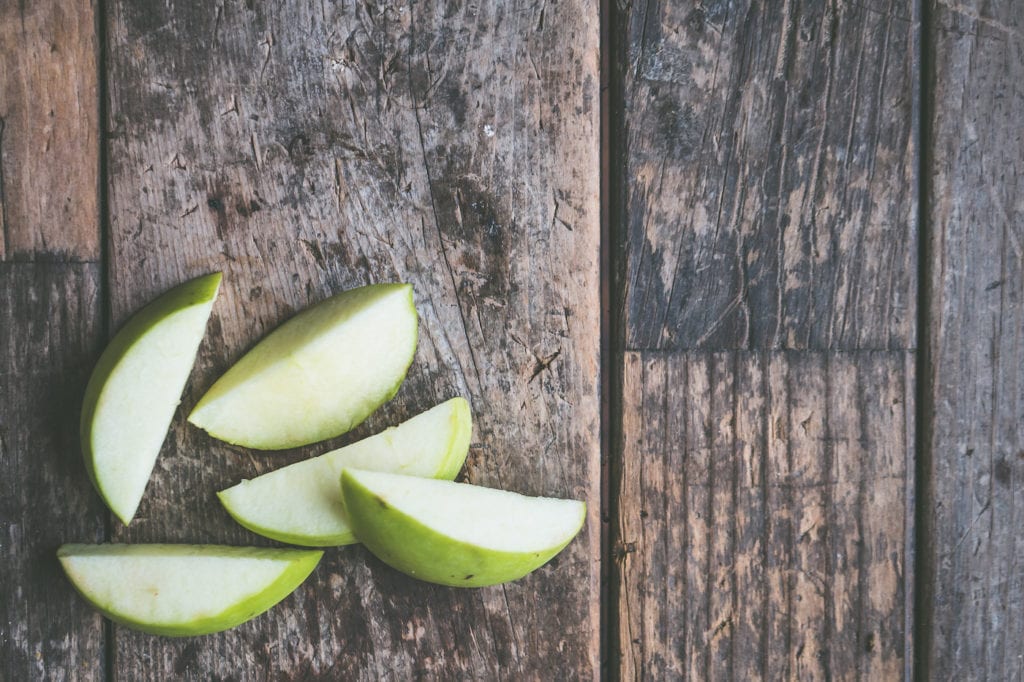
Snacks are make or break. They can either give you an energy boost when you’re drained or they can make you feel even more sluggish.
When it comes to snacks, aim for at least 6 grams of both protein and fiber. More protein is better—getting 10-15 grams is ideal.
Here’s what to eat
- String cheese and apples: This is a great combo because the string cheese has some protein and the apple has fiber (keep the skin on—that’s where the pectin is, which is fiber). Some even say that apples give you more energy than coffee. Go for a low-fat string cheese if you want fewer calories and fat.
- Hard boiled egg and edamame: Eggs have plenty of protein and choline. Edamame is packed full of copper and phosphorous which help convert food into energy and transport that energy to your cells. They’re also easy to keep on hand in an office fridge. Plus, edamame takes longer to eat. That makes it easier for you to be mindful of what and how much you are eating.
- Nut butter and bananas: Bananas have potassium, which provides electrolytes to help boost productivity. Nut butter helps keep blood sugar stable, since the banana has some sugar and carbs. Together this is the perfect snack for after lunch—especially if you did a lunch workout!
- Greek yogurt with berries and nuts: This is a great trio, because there is fiber from berries and nuts, good fats from the nuts (try pistachios or walnuts—walnuts even boost cognition), and protein from the yogurt. The yogurt contains probiotics to regulate the gut and increase immunity.
- Jerky stick and roasted chickpeas: The jerky and roasted chickpeas are both great sources of protein. Chickpeas also contain vitamin B9 — also known as folic acid — which converts carbs into glucose. Glucose is used by your body for energy. Since this combo is non-perishable, it makes snacking on the go much easier. In terms of jerky, go for a lean turkey or beef stick that is lower in sodium. And for chickpeas, make your own with spices such as cumin and cayenne, or herbs such as garlic and thyme. Packaged options are also available.
What to avoid for snacks
- Avoid coffee if you are sensitive to caffeine, as that late afternoon cup of java might make it harder for you to fall asleep. And if you get less sleep, you will wake up feeling less productive!
- Stay away from sugary granola bars, candy bars and sweets, bags of chips or super salty foods that don’t offer balanced protein. You’ll also want to avoid soda and booze.
Energy-boosting foods to eat for dinner
Dinner is similar to lunch in terms of the foods consumed.
Here’s what to eat
- Salmon with broccoli and brown rice: As we mentioned earlier, fish is rich in healthy fats. It also contains vitamin D, which has been proven to boost energy. Many people are deficient in vitamin D, so including this in your diet is essential. Pairing this meal with broccoli offers fiber, protein and vitamin C to protect your body from damaging free radicals. And the brown rice has some fiber and carbs to give that extra burst in energy while keeping blood sugar in check (note that white rice is doesn’t offer the same blood sugar benefits). You can also substitute salmon for chicken, steak, turkey or other animal protein sources. Aim for 4-6 ounces!
- Stir-fry: A stir-fry is easy to make in a matter of minutes in a wok. So, it’s great for busy nights. And you can experiment—try different proteins, such as tofu, chicken or steak. Or make a stir-fry using only veggies such as cauliflower, bok choy and broccoli. Give it a good sauce and add in a base, such as rice or cauliflower rice, and you are set.
- Whole-wheat pasta with shellfish and veggies: Whole-wheat pasta is a great option. For low-carb eaters, choose a pasta alternative such as spaghetti squash. You can add shellfish such as shrimp or scallops. These provide healthy fats and an antioxidant known as astaxanthin that has been proven to improve endurance and energy levels. And the veggies add in fiber and more essential nutrients to keep your immune system up.
What to avoid for dinner
- Avoid super large servings of food, since you won’t want to feel too heavy when trying to unwind and get ready for bed. These foods are stimulating (that’s why they help boost productivity!). If eaten close to bedtime, they may prevent you from falling asleep.
- Stay away from foods that are high in starch and fat, such as fried foods, breaded proteins and pizza. Focus on healthier ingredients. If you make mashed potatoes for a side, don’t lather it in butter. Instead, drizzle it with olive oil and fresh herbs!
- It’s hard to say no to dessert. Dessert can be acceptable as long as the portions are small and the foods chosen aren’t high in calories and sugar. Some good choices might be a square or two of dark chocolate, some low-fat ice cream or a couple of Oreos with a glass of milk.
- What not to have? A slice of cake! A large cookie! Pie and a scoop of ice cream! And say no to anything with coffee, since the caffeine may be overly stimulating.
- You also don’t want to drink alcohol, as it can impair sleep. Booze will cause you to wake up feeling groggy, with diminished mental clarity. Plus, you know what a hangover is like! Not good for being productive.
Next steps
Visit your grocery store to stock up on the energy-boosting foods discussed above.
For an even simpler approach to nutritious eating, subscribe to Fresh N Lean. We offer meal plans that include energizing foods such as salmon, broccoli and cage-free eggs, delivered fresh to your door.
Fresh N Lean is the nation’s largest organic meal delivery service. Our tasty, chef-prepared cuisine is always fresh and never frozen, and we offer convenient meal plans like Protein+, Keto, Paleo, Standard Vegan and Mediterranean. Choose Fresh N Lean for affordable nutrition, delivered to your doorstep.
